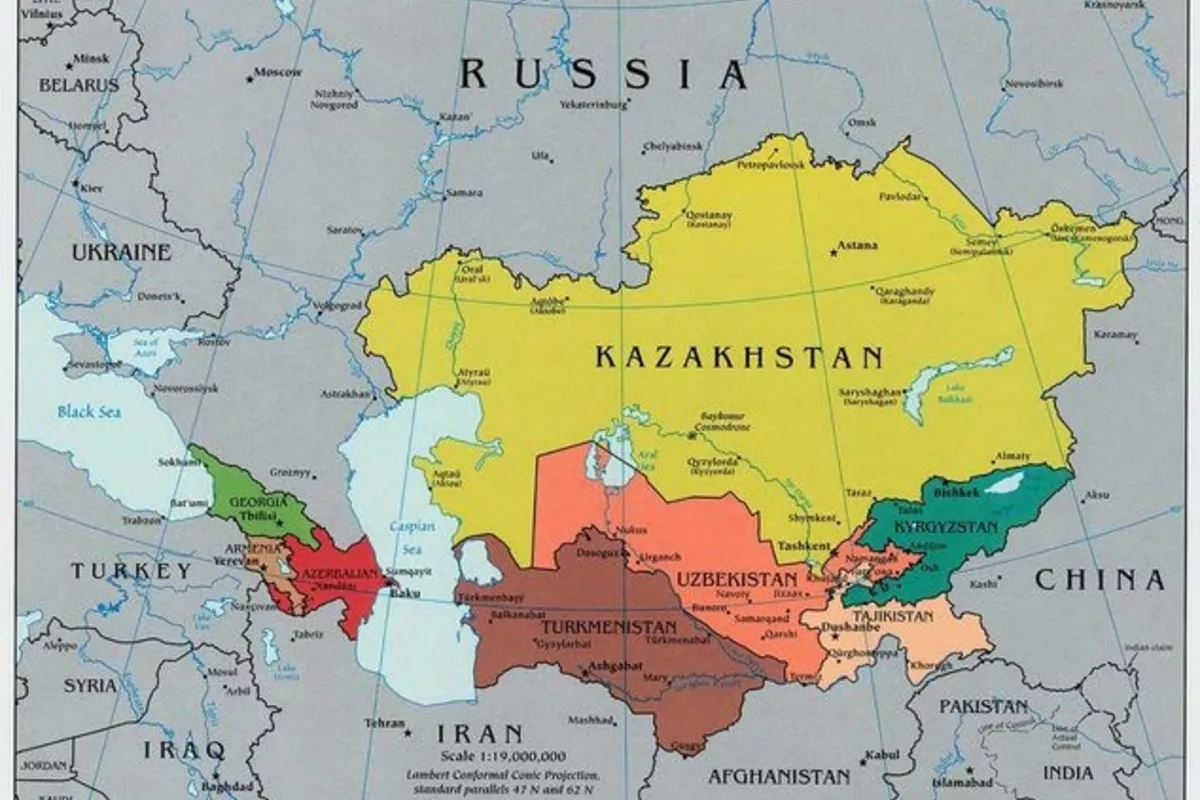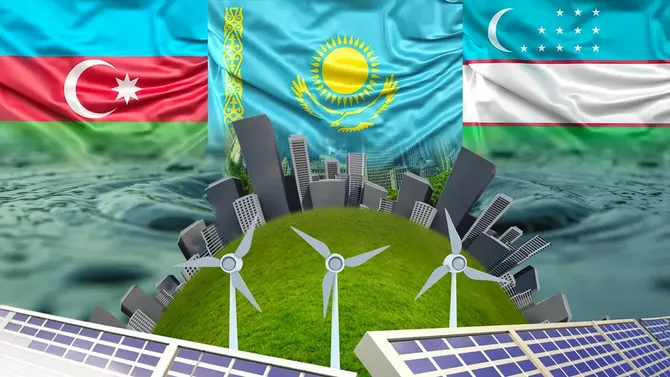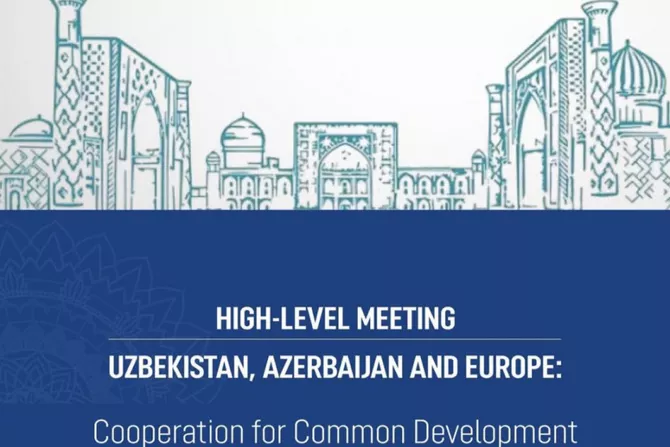
The high-level session “Uzbekistan, Azerbaijan, and Europe: Cooperation for Common Development” is underway in Tashkent, under the patronage of Uzbek President Shavkat Mirziyoyev. Notably, this forum marks the first event organized by the Nizami Ganjavi International Center in Central Asia, in collaboration with the Institute for Strategic and Regional Studies under the President of Uzbekistan.
In his opening remarks, the Uzbek president emphasized that the main focus of the session is on the interconnectedness and future partnership between Central Asia and the South Caucasus. He also highlighted the spirit of mutual trust and support that characterizes the Azerbaijan-Uzbekistan relations. He described Azerbaijan as a “strategic bridge connecting Central Asia and Europe.” The Uzbek president then underscored the importance of continuing targeted cooperation with the European Union and other partners to develop efficient transport, logistics, and energy corridors, which will help revive the region’s role as a hub between the West and the East. At the same time, President Mirziyoyev highlighted Azerbaijan’s readiness to participate in the development of new regional initiatives by strengthening cooperation between Central Asia and the South Caucasus.

Overall, given the current developments, there is nothing particularly surprising, as Central Asia and the South Caucasus represented by Azerbaijan and Georgia have effectively become a single geographical and geopolitical space. As a confirmation of this trend, on August 14, Kazakhstan and Uzbekistan reviewed the status of the “Green Energy Corridor” project across the Caspian Sea in collaboration with Azerbaijan. A concrete step toward its implementation was the establishment of a trilateral joint venture on July 1, 2025. In this context, it was emphasized that the “Azerbaijan-Central Asia” power cable across the Caspian Sea forms an integral part of the project to build an energy bridge from the Central Asian region through the Caspian and Black Seas to the European continent, facilitating the transmission of green energy.
At the same time, Astana and Tashkent discussed regional energy projects, including the construction of the Kambarata-1 Hydroelectric Power Plant, where Kyrgyzstan serves as a strategic partner for both Uzbekistan and Kazakhstan. During the same period, Azerbaijani President Ilham Aliyev ratified four agreements between Baku and Tashkent, covering cooperation in such areas as environmental protection, scientific research, and professional and higher education, among others.
Regarding bilateral cooperation between Baku and Tashkent, trade turnover between the two countries had grown by 40 per cent by the beginning of this summer. While the current figure stands at just over $200 million, discussions are underway to increase it to $1 billion by 2030. The Uzbekistan-Azerbaijan Investment Fund is operating successfully, having financed projects worth over $360 million. These include the construction of residential complexes in Tashkent, the development of tourism facilities, as well as logistics hubs and manufacturing enterprises in Kashkadarya. More than 9,000 vehicles have already rolled off the automotive assembly line in Hajigabul, prompting discussions about the construction of a second plant. This move is driven not only by export potential but also by strong expectations for the domestic market.
A notable development was the contract signed late last month between Uzbekistan’s Ministry of Energy, the State Oil Company of the Azerbaijan Republic (SOCAR), and Uzbekneftegaz concerning the Ustyurt oil and gas region. Under the agreement, SOCAR will serve as the operator during the geological exploration phase within the Production Sharing Agreement (PSA) on exploration, development, and production in the investment blocks of this area. According to the press release of Uzbekistan’s Ministry of Energy, if commercially viable hydrocarbon reserves are discovered, the parties will move on to the stage of their development and further production.

Thus, the ongoing forum in Tashkent, “Uzbekistan, Azerbaijan, and Europe: Cooperation for Common Development”, is taking place amid a significant strengthening of mutual understanding among the countries of Central Asia, Azerbaijan, and Georgia. This moment clearly underscores the emergence of this unified region mentioned earlier as a crucial geopolitical link of our time. Its significance becomes even more pronounced amid ongoing global political and economic turbulence, where traditional ties are collapsing, while partners and allies are increasingly turning into adversaries.
Moreover, this kind of mutual understanding is becoming increasingly important as the world enters an era of transformation-some may even call it the formation of a new world order-when the planet urgently needs strong, cohesive alliances (global platforms) capable of advancing an agenda centered on maintaining stability and security, at least in certain regions. After all, this factor is becoming a cornerstone for dialogue and partnerships.
In this context, particular attention naturally falls on the Middle Corridor and the Zangezur Corridor. The latter, incidentally, has come to be referred to as the “Trump Route for International Peace and Prosperity” (TRIPP). Thus, at this historic juncture, Central Asia and the South Caucasus are firmly positioning themselves as pivotal geopolitical hubs, serving, among other roles, as vital connectors between China and Europe. Moreover, the countries of this region continue playing a crucial role in the “North-South” and “West-East” projects. This underscores the immense significance of the Central Asia-South Caucasus axis and its far-reaching prospects.
Share on social media